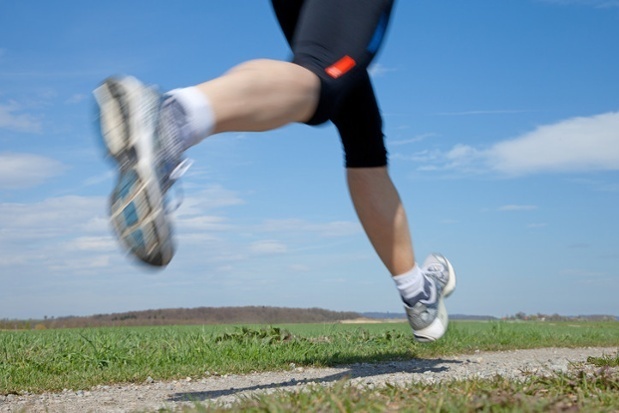
There are three major foot striking categories that every runner gets grouped into. They are rearfoot, midfoot, and forefoot striking patterns. While during a run you might use every one of these striking patterns but each pattern seems to be associated with a certain type of running. Sprinters tend to be forefoot strikers (landing on the ball of the foot). Someone who runs 800m to a mile most commonly will strike with their midfoot (landing along the middle part of the foot). The rearfoot striker (landing on the heel) is associated with longer distance running.
Some people already know how their foot strikes the ground while they run. If you are unsure, try to pay attention during your next run or take a look at the shoes you most commonly run in. Where most of the wear and tear is on the tread tends to tell you where you are striking the ground first.
Forefoot striking gives runners the best biomechanical advantage. The best shock absorbers are the ones your own body gave you; this would include the arches of the feet, calf muscles and Achilles tendon. Striking on the forefoot helps your body easily absorb the impact forces from the ground to be able to continue your running stride with ease. That being said, running excessively or too high on the forefoot could cause fatigue and injury in the same structures that are helping you.
Rearfoot striking gives the body the least biomechanical advantage. The impact rate is high when landing on your heel and your body has to work harder to try and continue with your running stride. To help with the impact rate people tend to wear thick, cushioned shoes. It does not correct this strike pattern but only puts a band aid over the area affected. Changing to a more minimalist shoe could help to change a rearfoot striker to amore mid to forefoot striker. It helps the foot act in a more natural way as to if you were barefoot. Longer stride lengths also increase the likelihood of extreme rearfoot striking. Increasing your step rate/cadence will shorten stride length and have a more midfoot to forefoot strike upon landing.
Midfoot striking is the most neutral of the three foot strikes and tends to blend with rearfoot and forefoot striking patterns. Over striding can cause a more rearfoot strike while decreasing stride length or step rate can cause more of a forefoot striking pattern.

.jpg)

